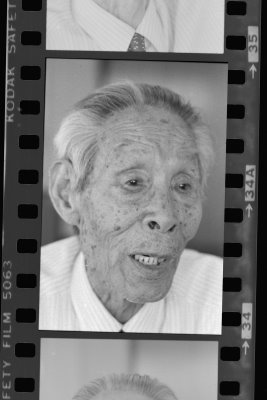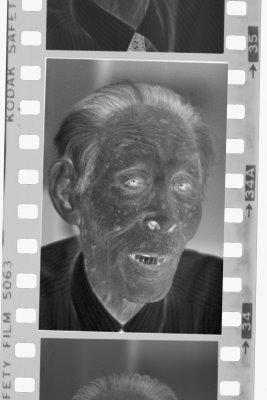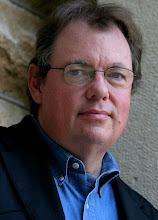Hiroshima 1986 - Frame 34A
 The anniversary of the atomic bombing of Hiroshima is coming up -- Friday, Aug. 6 -- and this got me to thinking about the hundreds of photographs I took there on assignment in 1986. For nearly six weeks, I interviewed through interpeters scores of atomic bomb survivors, such as the old man at left -- who described how he had sent his 14-year-old son, Kenji, to work in the munitions factory that morning and never saw him again.
The anniversary of the atomic bombing of Hiroshima is coming up -- Friday, Aug. 6 -- and this got me to thinking about the hundreds of photographs I took there on assignment in 1986. For nearly six weeks, I interviewed through interpeters scores of atomic bomb survivors, such as the old man at left -- who described how he had sent his 14-year-old son, Kenji, to work in the munitions factory that morning and never saw him again.The survivors are called hibakusha, literally "those who received the bomb," and for decades were discriminated against by fellow Japanese as somehow unclean, unfit to employ or to marry. This topic stirs up a number of issues -- the Cold War (remember that?), rolling my own film from bulk rolls, developing it in aluminum tanks on stainless steel reels, dodging and burning the photographs in the enlarger -- and the disconcerting fact that 21 years have passed since this photograph was taken.
That's a generation.
That is a bit profound, so you're likely to get more musings -- and perhaps more images -- on then and now as the anniversaries of Hiroshima and Nagasaki approach.
Technical Note:
 For the purists, and I know you're out there, I will cop to some sloppy Photoshopping of the above image (Well, I didn't have all night, did I?) to make the original negative strip and frame appear as a positive, as in a contact sheet. The original negative would resemble the one at left, or something close to it, as seen on a light table. The photo was taken on Kodak TRI-X with a Canon F1-n and, if I remember correctly, a 135mm 2.8 lens. Available light, of course. One of the things that bothers me about the current state of photojournalism is that nearly every photograph, even in bright sunlight, is taken with a strobe to fill shadows, especially in faces. That's because digital has a much narrower exposure latitude than film. But strobe still seems like cheating to me. Even though I shoot striclty digital now -- most photos on this blog are taken with a Canon EOS 10D -- I still rely on available light. I know, I'm a dinosaur.
For the purists, and I know you're out there, I will cop to some sloppy Photoshopping of the above image (Well, I didn't have all night, did I?) to make the original negative strip and frame appear as a positive, as in a contact sheet. The original negative would resemble the one at left, or something close to it, as seen on a light table. The photo was taken on Kodak TRI-X with a Canon F1-n and, if I remember correctly, a 135mm 2.8 lens. Available light, of course. One of the things that bothers me about the current state of photojournalism is that nearly every photograph, even in bright sunlight, is taken with a strobe to fill shadows, especially in faces. That's because digital has a much narrower exposure latitude than film. But strobe still seems like cheating to me. Even though I shoot striclty digital now -- most photos on this blog are taken with a Canon EOS 10D -- I still rely on available light. I know, I'm a dinosaur.


<< Home